June 18, 2025
TL;DR: Why Israel Already Lost to Iran
The Math is Simple:
Iran: 3,000+ missiles, can produce hundreds weekly, costs $100K-500K each
Israel: 340 jets, max 200 sorties, interceptors cost $3-4M each and running out in 10-12 days
Netanyahu’s Fatal Pattern:
Simultaneously fighting seven fronts (Gaza, Lebanon, Yemen, West Bank, Syria, Iraq, now Iran) while failing to achieve strategic objectives on any of them. Each war depletes the resources needed for the next.
The Technology Gap:
Iran’s hypersonic Fattah missiles have 50% intercept rates vs Israel’s 90%+ against normal missiles. No Western system can reliably stop hypersonics.
Geography Wins:
Iran: 1.6 million sq km (size of Alaska) to hide missiles
Israel: 20,770 sq km, all targets within 12 minutes of Iranian missiles
The Bunker Problem:
Israel’s weapons can’t destroy Iran’s deepest nuclear facilities. Iran designed them to survive nuclear attacks.
Strategic Patience:
Iran (85M people, revolutionary ideology) can absorb years of conflict. Israel (9.5M people, democracy) needs quick victories for political survival.
Bottom Line:
Israel bet everything on precision tech beating volume warfare. Iran is proving that 1,000 automated missiles > 340 human-piloted jets. The interceptor shortage means Israel literally cannot sustain defense much longer.
Netanyahu turned Israel’s tactical brilliance into strategic suicide.
Caption: Israeli citizens huddle in make-do shelters in subway stations. It is now normal to move back and forth from home to shelter 2-3 times a day/night.
Pattern of Militaristic Overreach: Netanyahu’s Failed Multi-Front Wars
The conventional wisdom is that Israel is a Middle East military superpower and Iran doesn’t have a chance. This could not be further from the truth. When Israeli Prime Minister Benjamin Netanyahu authorized “Operation Rising Lion” on June 13, launching nearly 200 aircraft against Iranian targets, he committed Israel to a war strategy it cannot win. This strategic miscalculation was not unprecedented—it was the inevitable culmination of a systematic pattern of overreach that has defined Netanyahu’s leadership across every front and decades as Prime Minister.
From Gaza to Lebanon, Yemen to the West Bank, Syria to Iraq, Netanyahu has consistently overestimated what military force can achieve while underestimating opponent resilience and the cumulative costs of simultaneous engagement. Iran represents not just another miscalculation, but the final, decisive test of a strategic seven front war that the math proves cannot succeed.
The early morning strikes, while tactically successful, initiated a timeline that favors Iran’s missile-centric approach over Israel’s technology-dependent air power. The fundamental miscalculation was not tactical: Israel bet its survival on the proposition that precision technology could overcome volume-based warfare. Five days of combat have proven this assumption catastrophically wrong.
According to multiple defense sources and real-time reports, Iran has demonstrated the capacity to launch coordinated barrages of hundreds of various types of subsonic and hypersonic ballistic missiles and drones, while Israel’s air force, despite its technological advantages, faces hard physical limits on jetfighter sorties and limited interceptor stockpiles that could prove decisive in sustained conflict.
Gaza: Fifteen Months, Leadership Intact
After over 15 months of intensive operations, Hamas leadership remains largely intact despite significant casualties, and much of Hamas’s tunnel network is still in “good functional state” in many parts of Gaza. On the surface, Gaza is literally just concrete dust but it matters little. Hamas fighters prominently featured in recent hostage handovers while civil administration members have resumed work, demonstrating continued organizational capacity. The stated objective of eliminating Hamas has proven unachievable despite massive resource expenditure.
IDF assessments reveal Hamas tunnel networks remain operational in refugee camps of central Gaza, most of Rafah, and Shejaiya in the north. Despite being “grievously weakened,” Hamas retains 58 hostages and strategic leverage through its underground infrastructure. Israel can damage Hamas facilities but cannot eliminate the organization’s core resilience, making each operation a temporary tactical gain at the cost of finite resources.
Lebanon: Tactical Gains, Strategic Stalemate
While Israel significantly weakened Hezbollah and confiscated over 155,000 weapons, analysts believe the organization retains substantial arms, including ballistic missiles. Hezbollah’s current focus on reconstruction rather than renewed military action reflects strategic patience rather than defeat. Israel has degraded but not eliminated the threat, while expending finite resources and international goodwill.
The 2024 conflict with Hezbollah demonstrated the same constraints that plague all of Netanyahu’s operations: tactical success without medium or long term resolution. Hezbollah’s decentralized structure and Iranian supply lines ensure regeneration capabilities that outlast Israeli surge capacity.
Yemen: Maritime Disruption Continues
Despite extensive strikes, the Houthis continue maritime disruption operations, having conducted over 100 attacks since November 2023, causing a 90% decrease in Red Sea shipping. US-led aerial assaults have yet to achieve their aim of ending Houthi attacks on shipping, demonstrating the limits of air power against dispersed, determined opponents.
The Houthis’ success in maintaining Red Sea operations despite international military pressure provides a preview of Iran’s strategic approach: accepting tactical losses while maintaining operational capacity through geographic dispersion and strategic patience.
During the second or third day of Operation Rising Lion, Israel announced it had targeted and possibly assassinated Mohammed Abdul Karim al-Ghamari, the Chief of Staff of the Houthi forces in Yemen. However, this claim was quickly denied by Houthi officials, and no independent confirmation of the assassination has emerged.
West Bank: Escalating Violence Without Resolution
Israeli operations have killed over 487 Palestinians in 2024 while settler violence averages four incidents daily, yet no planning emerges. Current military operations have forcibly displaced over 40,000 Palestinians, marking the largest displacement since 1967, creating new long-term security challenges rather than resolving existing ones.
The West Bank operations consume security resources while generating new sources of international criticism and internal Palestinian resistance, demonstrating Netanyahu’s consistent pattern of creating additional problems while failing to solve existing ones.
Syria/Iraq: Tactical Strikes, Strategic Incoherence
Israel has conducted over 600 strikes in Syria since December 2024, destroying 70-80% of Syria’s strategic weapons while declaring its invasion will continue for “unlimited time.” Yet analysts question “whether Israel’s military actions are guided by any coherent political endgame—one that is achievable, constructive for Israeli security, and mindful of broader regional stability.”
These operations exemplify the Netanyahu approach: shock and awe bombing displays producing minimal gains while creating new vulnerabilities, international complications, civil unrest inside of Israel and abroad.
The Compound Effect: Resource Depletion and Strategic Vulnerability
This multi-front engagement has systematically depleted Israel’s fighting capabilities while creating the very conditions that make the Iran confrontation unwinnable. Each theater has consumed interceptor stockpiles, strained pilot availability, exhausted international patience, and demonstrated the limits of precision technology against patient, adaptive opponents.
Most critically, Netanyahu’s pattern reveals a fundamental misunderstanding of modern warfare’s operational and logistical constraints. While achieving “immediate security objectives,” these operations “help perpetuate instability across the Middle East” by substituting tactical proficiency for strategic coherence.
Iran represents the culmination of this flawed approach: an opponent specifically designed to absorb and counter Israel’s preferred method of warfare, engaged at the moment when Israel’s capacity to sustain such operations has been most severely compromised by simultaneous commitments across multiple fronts.
1000’s of Automated Missiles Versus 340 Human Piloted Jets
Iran’s Missile Arsenal: Quantity at Scale
U.S. intelligence assessments place Iran’s ballistic missile inventory at over 3,000 units¹, making it the largest arsenal in the Middle East. However, defense analysts increasingly suspect these figures represent significant underestimates of Iran’s actual capabilities.
Caption: Iranian missile types and specs. Mach 5 and above is hypersonic.
Intelligence sources acknowledge that Iran’s extensive underground production facilities and decades of sanctions-driven self-reliance may have produced missile inventories far exceeding public estimates. Unlike democratic militaries that publicize capabilities for deterrence purposes, Iran maintains “Perception Management” policies that incentivize appearing weaker than their actual levels.
Recent conflict data suggests Iran began the current confrontation with what Israeli intelligence estimated as approximately 2,000 medium-range ballistic missiles (MRBMs). Since June 13, Iran has fired approximately 700 ballistic missiles at Israeli targets in coordinated waves², yet continues launching sustained attacks without apparent inventory constraints.
The missile types deployed include:
Shahab-3 and Ghadr variants (1,300-2,000km range)
Fateh-110 family missiles (200-300km range)
Zolfaghar medium-range systems (700km range)
Advanced Fattah “hypersonic” missiles (Mach 5+ terminal velocity)⁴
Production costs for Iranian missiles remain classified and unknown, but defense analysts estimate 500,000 per unit for medium-range systems. Iran’s domestic production capacity, enhanced by Chinese technical cooperation and North Korean component supplies, appears to exceed previous Western assessments.
Israel never built up a substantial rocket and missile stockpile or program, opting for American high tech weaponry instead, a critical oversight.
Israel’s Sortie Generation: Physical Constraints
Israel operates approximately 340 combat aircraft according to defense directories⁵, including:
Caption: Initial Israeli testing of F-35I Adir 5th Gen Fighters
39 F-35I “Adir” stealth fighters
75 F-15 variants (optimized for heavy payload missions)
174 F-16C/I multirole fighters
66 F-15I “Ra’am” long-range strike aircraft
During the current conflict, Israel has demonstrated the ability to generate approximately 200 sorties per day for major operations⁶, representing near-maximum surge capacity for the Israeli Air Force. Military aviation experts note that sustained operations above 70% sortie rates typically result in maintenance degradation and pilot fatigue that reduces long-term operational capacity.
Underground facilities require specialized bunker-buster weapons that only the largest aircraft can carry. The GBU-28 “bunker buster” weighs 5,000 pounds and typically requires F-15I aircraft for delivery—non-stealth platforms vulnerable to air defenses and not even close to penetrating Natanz or other nuclear sites.
For comparison, the U.S. Air Force—with vastly larger resources—acknowledges difficulty matching Israel’s demonstrated 200-aircraft strike capability due to readiness shortfalls, with F-22 mission-capable rates at only 40% and aging F-15C availability at 33%⁷.
The numbers are unforgivably bleak: Israel’s maximum sustainable air operations cannot match Iran’s demonstrated drone and missile production and deployment rates, particularly when Israeli aircraft face the additional constraint of operating at extended ranges against hardened targets.
Nuclear Site Bunker Penetration: Israel’s Failure Gap
Rising Lion Was Never Achievable From the Start
Israel’s inability to destroy Iran’s most critical infrastructure reveals the operation’s fundamental strategic flaw. While Israeli F-15I aircraft can deliver the 5,000-pound GBU-28 bunker-buster bombs, these weapons prove insufficient against Iran’s deepest facilities.
Caption: Fordow (Fordo a.k.a. Shahid Ali Mohammadi Nuclear Facility) near Qom became operational in 2009.
Fordow Uranium Enrichment Facility: Buried 90+ meters beneath mountain granite, this facility requires multiple rounds of 30,000-pound GBU-57 “Massive Ordnance Penetrator” just to expose it, not destroy it. Only U.S. B-2 stealth bombers can deliver these weapons, and Israel possesses neither the aircraft nor the munitions.
Natanz Nuclear Complex: Similarly hardened against conventional attack, Iran’s primary enrichment facility was designed to survive nuclear weapons, making conventional bunker-busters inadequate regardless of delivery precision.
Strategic Implications: Israel can damage Iranian facilities but cannot eliminate the nuclear program’s core infrastructure. This limitation means Iran’s most vital capabilities survive even successful Israeli attacks, while Israel expends finite resources for temporary tactical gains.
THAAD Illusions: Billion-Dollar Kabuki Theater
The deployment of U.S. THAAD (Terminal High Altitude Area Defense) systems represents expensive military theater rather than effective defense:
Caption: THAAD system en route to Israel via C-130 Hercules transport plane.
Technical Obsolescence: THAAD interceptors, designed in the 1990s for predictable ballistic missile trajectories, cannot effectively engage Iran’s maneuverable hypersonic weapons. The system’s radar and kinetic interceptors assume targets following ballistic paths—assumptions invalidated by Fattah missiles’ unpredictable flight profiles.
Cost-Effectiveness Failure: At over $1 billion per battery with approximately 50% effectiveness against hypersonic targets, THAAD represents the same cost-exchange disadvantage plaguing Israel’s entire defensive strategy.
Strategic Misdirection: THAAD’s presence creates false confidence in defensive capabilities while Iran demonstrates the system’s limitations through successful penetrations of defended airspace.
Geography is Real, Distance is Asymmetric Advantage
Iran’s Strategic Depth
Iran’s 1.6 million square kilometers, the size of Alaska, provide immense advantages for missile deployment and concealment. Intelligence analysts have identified over 500 possbile launch sites across Iran’s territory, many in mountainous terrain that complicates target acquisition and some are decoys¹¹.
Caption: Various high value targets inside Iran. So far, none have been destroyed.
Mobile launcher technology allows Iranian forces to disperse missile systems using commercial truck chassis, making them virtually indistinguishable from civilian traffic until launch preparation begins. Once dispersed, intelligence sources indicate tracking becomes extremely difficult even with advanced satellite surveillance. Israel has also not been keeping up with historical satellite data, having recently claimed victory in destroying two decomissioned cold war era F-14’s that have been laying still for 3 years. The irony is anyone can look at them on Google Maps.
Caption: Decommissioned F-14 at Merhabad International Airport, April 2022. Notice it is not near a taxiway and wings are not in takeoff configuration.
Caption: 2nd decommissioned F-14 added to Merhabad International Airport, June 2023. Wings also swept back and planes are pointed at each other.
Caption: February 2025, the F-14’s have not moved in three years. Israel never noticed even though this is Google Maps.
Caption: IDF shows off footage of destroying “active” F-14’s. Notice how broken up the pavement is.
Israel’s Concentration Risk
Israel’s 20,770 square kilometers present an entirely different strategic picture. Major population centers, critical infrastructure, and military bases exist within range of Iranian missiles launched from multiple directions.
Key vulnerabilities include:
Nevatim Air Base (primary F-35 facility) - already struck multiple times
Tel Nof Air Base (F-16 operations center) - targeted in recent attacks
Ben Gurion Airport (civilian/military dual use)
Population centers within 15 minutes flight time of Iranian missiles
Caption: Nevatim Airbase, missile strikes from October 2024 True Promise 2.
The physics of ballistic missile flight from Iran to Israel—approximately 12 minutes for medium-range systems—provides minimal warning time for defensive systems, even with advanced early warning radar networks.
Netanyahu’s Foundational Mistakes
Attacking What Cannot Be Destroyed
Netanyahu’s authorization of strikes against Iran represents a fundamental strategic error: initiating conflict against an opponent possessing decisive advantages in geography, production capacity, and strategic patience. The decision ignored many realities that military advisors likely presented but political leadership chose to dismiss.
The Timing Trap: By attacking first, Israel assumed responsibility for achieving decisive victory against an opponent designed to absorb and retaliate against exactly such attacks. Iran’s decades of preparation for this scenario created strategic depth Israel cannot overcome with available weapons.
Resource Depletion Strategy: Iran’s response demonstrates sophisticated understanding of Israeli vulnerabilities. Rather than immediate maximum retaliation, Iran has initiated systematic pressure designed to exhaust Israeli defensive systems while preserving escalation options.
International Isolation Risk: As the attacking party, Israel faces increasing international pressure for cease-fire negotiations that would preserve Iranian capabilities while constraining Israeli freedom of action.
What Netanyahu Ignored
Military planners likely presented Netanyahu with arithmetic that predicted current outcomes:
Israeli Sortie Limitations: Maximum sustainable air operations of 200 aircraft per sortie against targets requiring multiple strikes for temporary damage, with pilot fatigue and aircraft maintenance creating operational bottlenecks within 36-48 hours.
Iranian Missile Advantage: Conservative estimates of 3,000+ missiles against Israeli interceptor inventories numbering in hundreds, with production favoring Iran by ratios exceeding 10:1.
Geographic Reality: Iran’s 1.6 million square kilometers providing unlimited dispersal and concealment options against Israel’s 20,770 square kilometers of concentrated targets within 12 minutes flight time of Iranian missiles.
Decision Point: Send It Anyways
Intelligence sources suggest Netanyahu received detailed briefings on Iranian hypersonic capabilities and defensive limitations before authorizing attacks. The decision to proceed despite mathematical disadvantages indicates either:
Political Calculation Over Military Reality: Domestic political pressure outweighing strategic assessment, committing Israel to unwinnable conflict for short-term political gains.
Intelligence Failure: Fundamental misunderstanding of Iranian capabilities, defensive resilience, or strategic patience that rendered military planning obsolete.
Escalation Assumption: The belief that U.S. intervention would fundamentally alter the strategic balance, despite American limitations against hypersonic weapons and similar defensive vulnerabilities. This reflects a cycle of military commitments that accumulate risk and strategic debt, akin to a Ponzi Scheme that ultimately collapses under its own weight.
WW3 Wild Cards
Iran’s Strategy: Strength Through Determination and Patience
The most significant factor in the current conflict may be what Iran has chosen not to deploy. Intelligence assessments suggest Iranian forces possess capabilities that remain largely unused, indicating strategic restraint rather than technical limitations.
Hypersonic Superiority: Iran’s Fattah hypersonic missiles, traveling at Mach 5+ with maneuverable reentry vehicles, represent a technological category for which no Western defense system demonstrates reliable effectiveness. Current Arrow 2/3 intercept rates against Fattah systems appear to hover around 50%, (No one really knows.) compared to 90%+ success rates against conventional ballistic missiles. Israel possesses no backup systems capable of engaging hypersonic targets, creating an unprecedented defensive gap.
Proxy Force Restraint: Hezbollah’s estimated 100,000+ rocket and missile inventory remains largely inactive, suggesting coordinated restraint across Iran’s regional alliance network rather than immediate escalation to maximum pressure.
Civilian Target Avoidance: Despite possessing the capability to target Israeli population centers directly, Iranian strikes have focused on military and infrastructure targets, demonstrating strategic discipline that contrasts with maximum damage potential.
Unknown: Iranian Air Defenses
Iran’s defensive capabilities remain the conflict’s greatest intelligence gap, with potentially decisive implications:
Rumored Russian Systems: Unconfirmed reports suggest possible S-400 or advanced SAM (Surface to Air Missile system) transfers that could fundamentally alter Israeli air operations. If operational, these systems would force Israeli F-15 and F-16 aircraft into defensive roles while challenging even the F-35 stealth.
Chinese Technology Integration: Possible HQ-9 or similar advanced air defense systems could provide layered protection that has not yet been tested against Israeli air power.
Underground Infrastructure: Iran’s demonstrated ability to conceal missile systems suggests similar capabilities for air defense networks, potentially creating surprise defensive zones.
Israel’s Technological Constraints
While Israeli offensive capabilities remain sophisticated, they face fundamental limitations:
Hypersonic Defense Gap: Again, no Israeli or U.S. system can reliably intercept hypersonic weapons, creating an asymmetric vulnerability that Iran has not yet fully exploited.
Fighter Aircraft Limitations: Traditional air superiority platforms, regardless of technological sophistication, face physics constraints against hypersonic missiles that travel faster than any aircraft and modern SAM systems with ranges exceeding 400 kilometers. The golden age of fighter jets is over and despite 6th generation fighters on the horizon – only China at the moment, humans cannot keep pace with drones, satellites, and AI.
Ammunition Dependency: Precision weapons stockpiles remain finite, with replacement timelines measured in months while Iranian missile production operates on weekly cycles.
Historical Precedents and Strategic Implications
Air Defense Challenges
Historical analysis suggests that no air defense system has ever achieved sustained success rates above 90% against determined attacks with sufficient volume. Even the most sophisticated systems—from London’s anti-aircraft defenses in World War II to modern PATRIOT deployments—eventually succumb to sustained missile barrages.
The 1991 Gulf War, often cited as an example of air power dominance, involved attacking a militarily inferior opponent with minimal air defenses. Iraq possessed fewer than 500 Scud missiles and no sophisticated air defense networks comparable to modern Iranian systems.
Recent conflicts in Ukraine demonstrate how missile volume can overwhelm even Western-supplied air defenses, with Russian missiles regularly penetrating Ukrainian defensive networks despite NATO-standard equipment and training.
Israeli Interceptor Supply Already Critical
The spending rates of AD missiles favor the missile-equipped offense, with real-time data confirming following:
Interceptor Depletion Crisis: Recent U.S. official reports confirm Israel is running critically low on Arrow 2/3 interceptors, the only system that has a chance of intercepting hypersonics. Analysts describe this as “critical shortage” levels. At current engagement rates, Israel may need to begin rationing interceptors within days, choosing which incoming missiles to intercept and which to allow to strike.
Production Mathematics: Iran’s entire annual defense budget could theoretically build 5,000-10,000 medium-range missiles, while Israel’s interceptor costs could rapidly consume their entire defense budgets at current engagement rates. Each Arrow interceptor costs approximately $3-4 million, compared to Iranian missiles costing $100,000-500,000 per unit.
Resupply Constraints: U.S. interceptor production, despite recent emergency expansion, remains constrained by semiconductor availability and specialized manufacturing requirements that cannot be rapidly scaled. Even combined U.S.-Israeli production capacity cannot match the demonstrated Iranian missile expenditure rates.
Pilot and Aircraft Limitations
Israeli Air Force operations face several physical constraints:
Pilot Fatigue: Sustained high-tempo operations above 200 sorties per 24 hours require pilot rest cycles that limit continuous operations. Combat stress and precision requirements make extended operations particularly demanding.
Maintenance Requirements: F-35 aircraft require 12-16 hours of maintenance for every flight hour, creating bottlenecks for sustained operations. Parts availability and specialized equipment limit surge capacity.
Fuel and Munitions: Long-range strikes against Iranian targets require extensive aerial refueling and specialized weapons that exist in limited quantities.
Weather and Environmental Factors
Regional weather patterns during winter months can severely limit air operations, while sandstorms and visibility restrictions favor defensive missile operations over precision airstrikes.
Iranian mountain terrain provides natural concealment for mobile launchers while complicating target acquisition for Israeli aircraft operating at extended ranges.
How Low Do You Want to Go?, Strategic Endurance
The conflict reveals fundamental differences in societal tolerance for sustained warfare that may prove more decisive than technological capabilities:
Iranian Strategic Patience: With 85 million citizens and a revolutionary ideology emphasizing long-term struggle, Iran demonstrates capacity for extended conflict that recalls the eight-year Iran-Iraq War. This population can absorb casualties and economic disruption that would create political crisis in smaller democracies. Despite it being a theocratic autocracy, Iran’s citizens have been emboldened and not clamored for regime change as Netanyahu had hoped.
Israeli Democratic Constraints: Israel’s 9.5 million citizens operate within democratic political structures requiring public support for military operations. Extended casualties, economic costs, and international pressure create political timelines that favor opponents with greater strategic patience. Simply put, Israel has more to lose, while Iran is willing to lose more.
Demonstration of Restraint: Iran’s measured escalation—using limited numbers of its most advanced weapons while maintaining focus on military targets—suggests confidence in long-term victory through systematic pressure rather than immediate maximum force.
Regional and USA Involvement
U.S. military involvement presents complex strategic calculations:
Force Multiplication Limits: While American air power and defensive systems provide additional capacity, they also create new targets for Iranian missiles. Regional U.S. bases become “legitimate targets” under Iranian doctrine, potentially expanding rather than containing the conflict scope.
Technological Reality: The United States currently deploys no operational hypersonic interceptors, meaning Iranian Fattah missiles present the same defense challenges to American forces as to Israeli systems. U.S. fighter aircraft face identical physics constraints against modern missile systems.
Production Capacity Mismatch: Even combined U.S.-Israeli interceptor production cannot match Iranian missile manufacturing rates, as demonstrated by current interceptor shortages forcing potential rationing of defensive systems. American involvement extends conflict duration without fundamentally altering limitations, as both countries now face depleted stockpiles.
Proxy Force Management: Iran’s restraint in activating Hezbollah’s massive rocket arsenal suggests coordination aimed at graduated pressure rather than immediate escalation. This approach allows sustained pressure while maintaining escalation options.
Sunni State Calculations: Regional powers including Saudi Arabia and UAE possess limited air defense capabilities that could provide marginal protection but lack capacity to significantly alter the fundamental balance between missile offense and defensive systems.
Nuclear Escalation Risks
The proximity of Iranian nuclear facilities to ongoing combat operations creates risks of radiological release that could affect regional populations regardless of conflict outcome.
Israeli decision-makers face pressure to achieve decisive results before Iranian missile inventory recovers or before international intervention forces a ceasefire that leaves Iranian capabilities intact. With Arrow interceptor stockpiles reportedly sufficient for only 10-12 additional days at current engagement rates, time favors Iran’s patient, volume-based approach over Israel’s precision-dependent strategy.
Conclusion: Iran Outlasts Operation Rising Lion
Netanyahu’s decision to attack Iran represents one of the most catastrophic strategic miscalculations in modern military history. By initiating conflict against an opponent possessing overwhelming advantages in missile production, geographic depth, strategic patience, and hypersonic technology, Israel committed itself to a war of attrition it cannot win.
Fundamental Error: Israel bet its survival on the proposition that technological superiority could overcome sobering realities. Five days of combat demonstrate that precision weapons, sophisticated air defenses, and advanced aircraft cannot defeat an opponent producing missiles faster than Israel can intercept them while possessing weapons Israel cannot defend against.
Hypersonic Is Game Changing: Iran’s operational Fattah missiles represent a categorical technological advantage that Israeli defenses cannot reliably counter. Guessing around 50% intercept rates against these systems, Israel faces weapons that will reliably penetrate any defensive arrangement, making sustained defense impossible.
Arms Production Imbalance: Iran’s demonstrated ability to maintain sustained missile attacks while Israel expends finite interceptor stockpiles creates an inevitable outcome. The reports confirming that Israel is critically low on Arrow 2/3 interceptors – U.S. officials state Israel may have only 10-12 days of defensive capacity remaining at current engagement rates. Even with unlimited U.S. resupply, interceptor production cannot match Iranian missile manufacturing, particularly when each engagement costs 5-25 times more than the weapon being intercepted.
Bunker Busting Problems: Israel’s inability to destroy Iran’s most critical infrastructure means that even tactical military success cannot achieve strategic objectives. Iran’s nuclear capabilities, protected by geography and engineering Israel cannot overcome, survive any conceivable conventional attack, even nuclear ones.
Long Term Patience Pays Off: Iran’s willingness to sustain pressure against democratic opponents operating under political time constraints creates decisive advantages that military technology cannot overcome. Israel’s need for rapid, decisive victory conflicts with sustained, graduated pressure.
The Pattern Fulfilled: Most importantly, the Iran operation represents the inevitable culmination of Netanyahu’s systematic military failures across every theater. From Gaza’s unconquered tunnels to Hezbollah’s surviving arsenal, from Houthi-controlled shipping lanes to escalating West Bank violence, from Syria’s strategic incoherence to Iraq’s purposeless strikes—each front demonstrates the same fundamental error: mistaking tactical proficiency for strategic coherence.
The war’s outcome was determined not by battlefield performance but by Netanyahu’s decision to ignore constraints no amount of courage, skill, or technology could overcome. Israel lost the war the moment it began attacking an opponent designed to absorb exactly such attacks while possessing the means to retaliate indefinitely.
It is beginning to dawn upon military strategists and policymakers, that the conflict demonstrates that realities – geography, production capacity, strategic patience, and technological paradigm shifts. These are what ultimately determines outcomes regardless of tactical proficiency or technological sophistication. The era of air power dominance has ended, replaced by drone and missile-centric warfare that favors volume over precision and strategic depth over technological superiority.
Netanyahu’s obstinations and gambits may prove to be the series of decisions that fundamentally altered the Middle East balance of power, demonstrating that even the most sophisticated military forces cannot overcome opponents possessing the right combinations and balances of strategic advantages. The conflict continues, but its ultimate trajectory was established well before the first F-35 left the tarmac.
Israel’s citizens huddle in fear for their lives every night in crowded stations underground, while Iran and their allies are emboldened. Israel’s standing has surely been degraded no matter the propaganda amongst the EU and USA officials. They may lose support eventually and open the door for what Netanyahu has always preached, existential threat.
Sources and Documentation
¹ Center for Strategic and International Studies Missile Threat Database, “Missiles of Iran,” 2024. Analysis of Iranian ballistic missile inventory and capabilities.
https://missilethreat.csis.org/country/iran/
² CNN Analysis, “One number could define the Iran-Israel conflict’s outcome,” June 17, 2025. Real-time assessment of Iranian missile expenditure during current conflict.
https://www.cnn.com/2025/06/17/middleeast/iran-israel-conflict-ballistic-missiles-analysis-intl-latam
³ Jewish News Syndicate, “IDF official: Iran’s goal is an 8,000-missile arsenal to annihilate Israel,” June 16, 2025. Israeli intelligence assessment of Iranian expansion plans.
https://www.jns.org/idf-official-irans-goal-is-an-8000-missile-arsenal-to-annihilate-israel/
⁴ Breaking Defense, “What missiles does Iran have to launch against Israel, and how far can they go?” June 16, 2025. Technical analysis of Iranian missile capabilities including Fattah hypersonic systems.
https://breakingdefense.com/2025/06/how-iran-could-use-its-ballistic-missile-capability-to-strike-back-at-israel-analysis/
⁵ Flight Global, “Israel launches ambitious air campaign against Iran,” June 15, 2025. Comprehensive analysis of Israeli Air Force capabilities and aircraft inventory.
https://www.flightglobal.com/fixed-wing/israel-launches-ambitious-air-campaign-against-iran/163348.article
⁶ EurAsian Times, “F-35 Adir, F-16 Sufa & F-15 Ra’am! Israel’s Customized Jets Pound Iranian Military!” June 14, 2025. Operational analysis of Israeli strike capabilities.
https://www.eurasiantimes.com/adir-sufa-raam-israels-customized-fighter-jets/
⁷ Air & Space Forces Magazine, “Israel Launched an Attack With 200 Fighters. Could the US?” June 15, 2025. Comparative analysis of U.S. and Israeli air power capabilities.
https://www.airandspaceforces.com/u-s-air-force-would-be-challenged-to-match-israeli-strike-given-readiness-slide/
⁸ Calcalist Tech, “From Arrow to Iron Dome: The economics of Israel’s air defense strategy,” April 15, 2024. Detailed cost analysis of Israeli defensive systems.
https://www.calcalistech.com/ctechnews/article/h18og9cl0
⁹ EurAsian Times, “Israel’s Iron Dome Is Deliberately ‘Leaking Missiles’,” June 17, 2025. Analysis of defensive system performance and cost structures.
https://www.eurasiantimes.com/israels-iron-dome-is-deliberately-leaking-missiles/
¹⁰ Calcalist Tech, “From Arrow to Iron Dome: The economics of Israel’s air defense strategy,” April 15, 2024. Arrow system cost analysis and performance metrics.
¹¹ Al Jazeera, “Israel-Iran conflict: How ballistic missiles work and where can they reach?” June 16, 2025. Geographic and technical analysis of missile deployment capabilities.
https://www.aljazeera.com/news/2025/6/16/israel-iran-conflict-how-ballistic-missiles-work-and-where-can-they-reach
¹² Washington Post, “Iran’s missile attack on Israel raises questions about limits of arsenal,” October 14, 2024. Analysis of Iranian penetration rates and defensive performance.
https://www.washingtonpost.com/world/2024/10/05/iran-missiles-attack-israel-deterrence/
¹³ Newsweek, “How Israel’s Air Force Compares as IDF Claims ‘Air Superiority’ Over Iran,” June 16, 2025. Assessment of current defensive capabilities and limitations.
https://www.newsweek.com/israel-air-force-iran-air-superiority-2086133
¹⁴ EurAsian Times, “Israel’s Iron Dome Is Deliberately ‘Leaking Missiles’,” June 17, 2025. Documented system performance issues during sustained attacks.
¹⁵ The War Zone, “Israeli F-35s First To Use ‘Beast Mode’ In Combat,” March 17, 2025. Analysis of F-35I operational tempo and capabilities.
https://www.twz.com/air/israeli-f-35s-first-to-use-beast-mode-in-combat
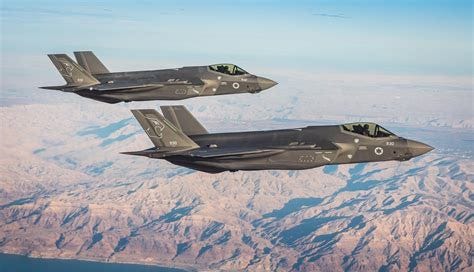



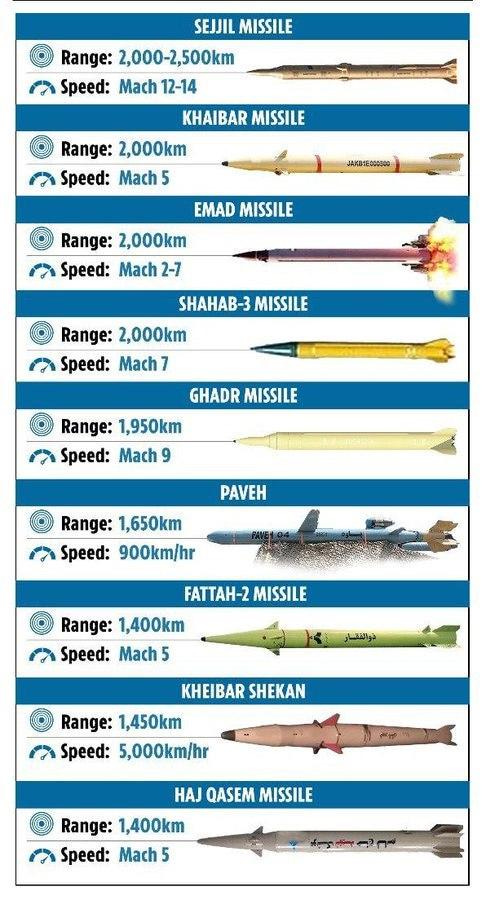

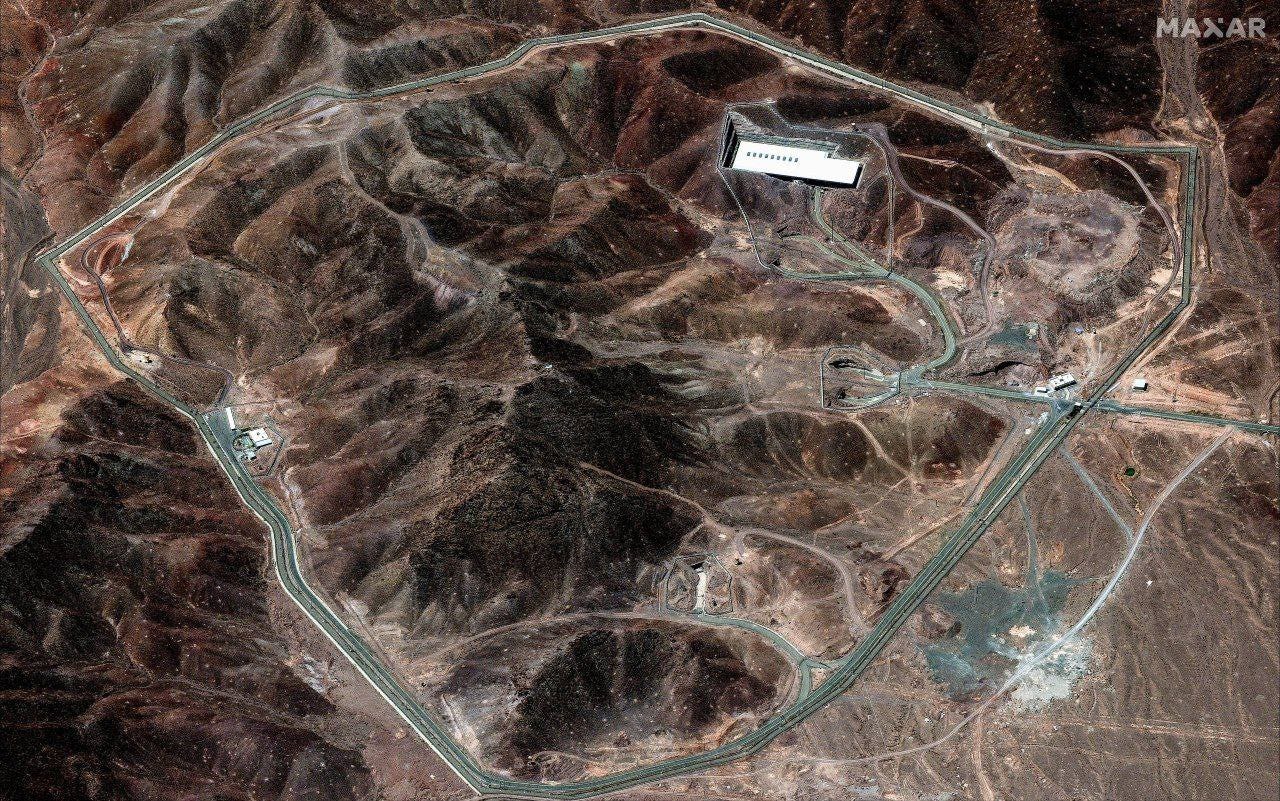
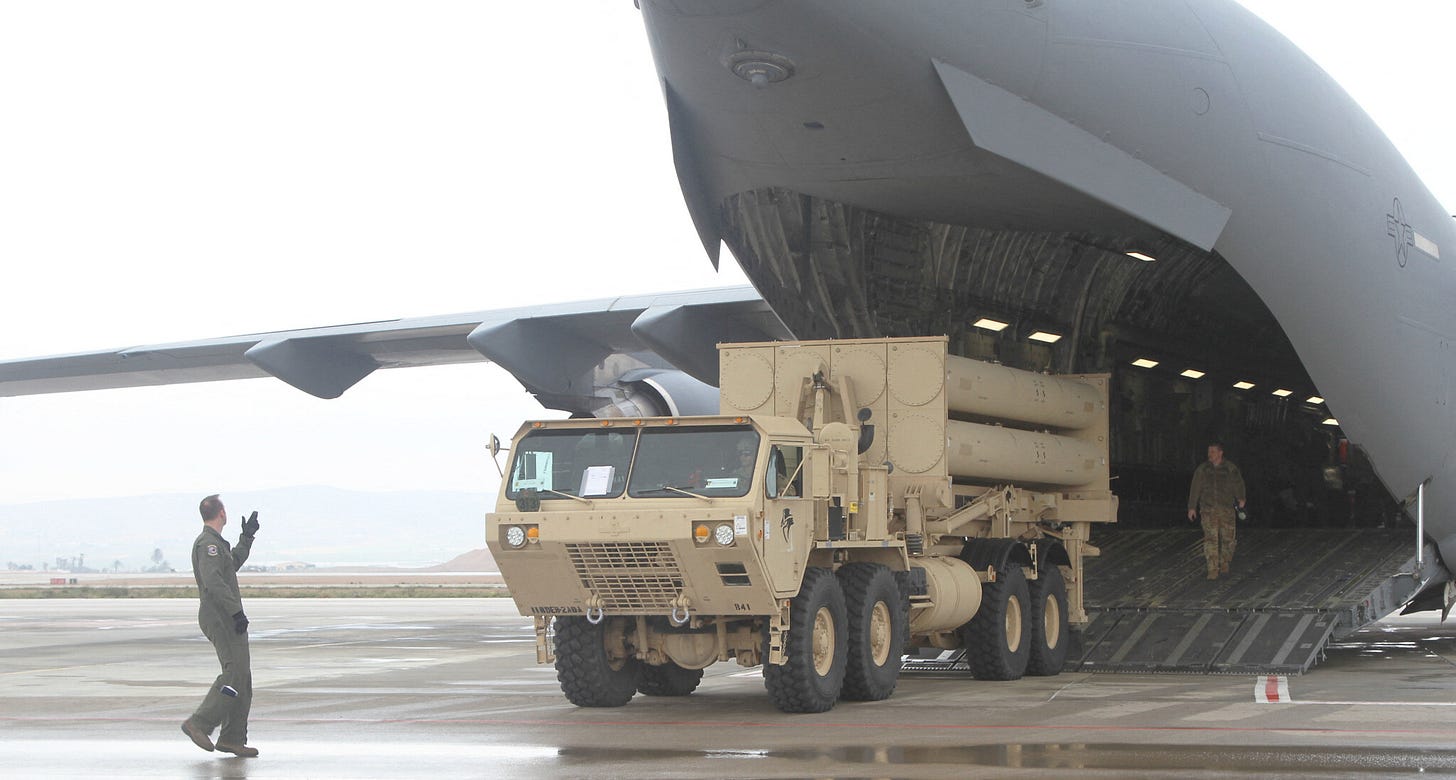
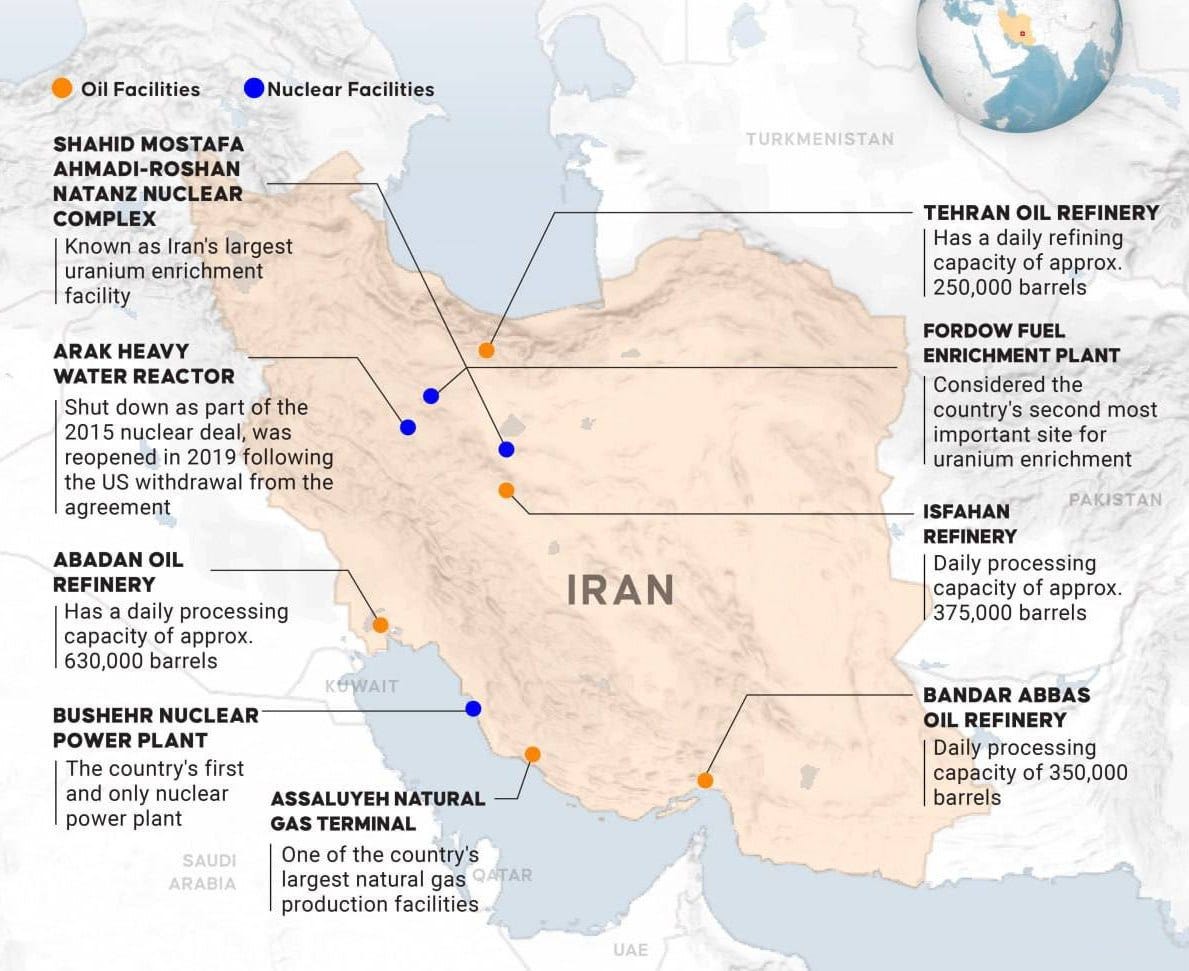



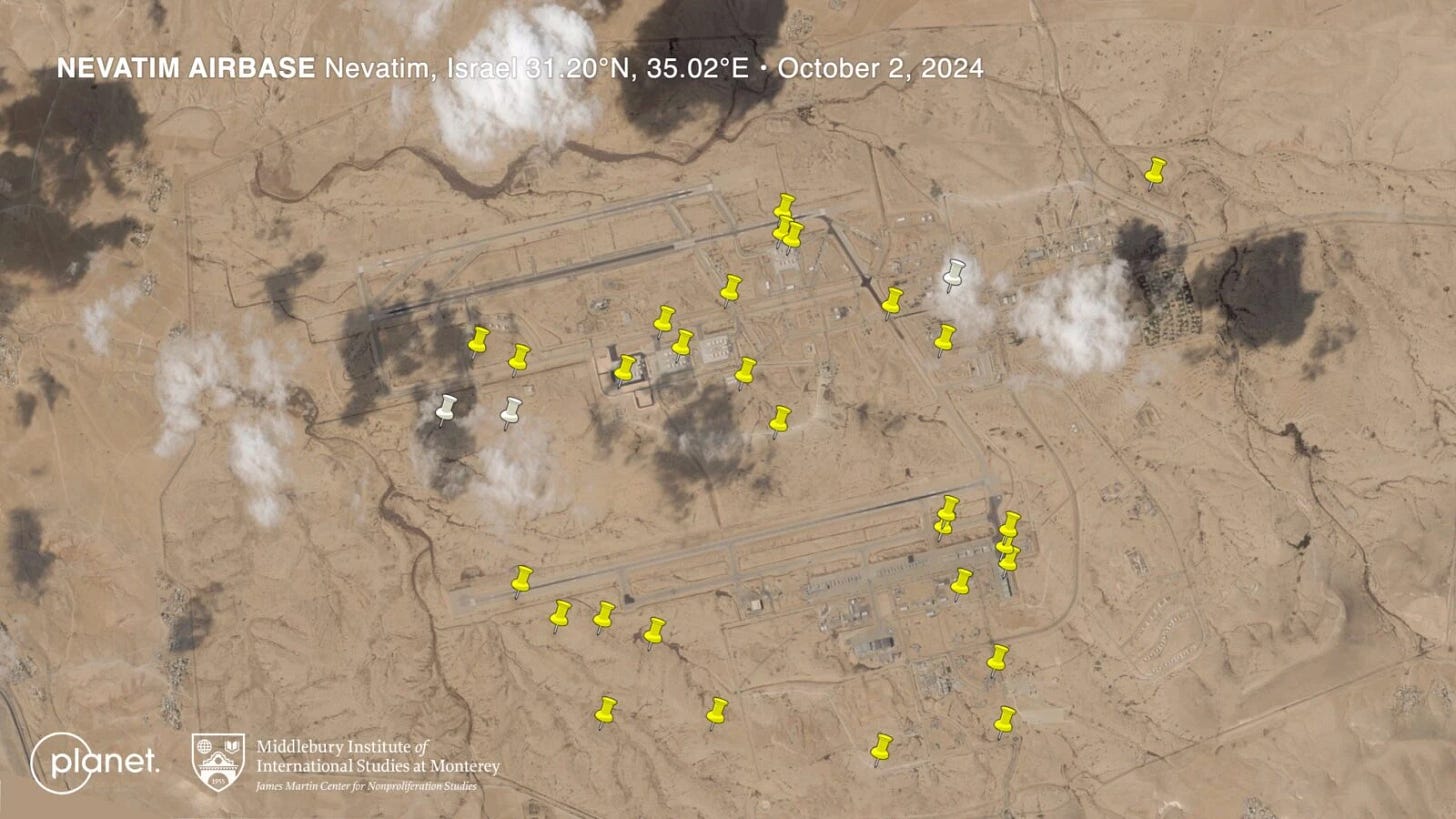

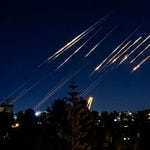






Share this post